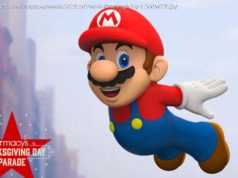Your photos deserve to exist as more than mere bits and bytes. Here’s what you need to know to pick the right photo printer—whether for snapshots or for big, bold art prints—based on your output needs.
«True» photo printers —in contrast to standard inkjets that manufacturers merely call photo printers—fall into two broad categories at the consumer level: dedicated snapshot printers, and near-dedicated photo printers. As the name indicates, dedicated (also known as «small-format») snapshot printers are designed to print nothing but smaller photo prints. You simply can’t use them for outputting documents, because they don’t accept letter-size paper stock. They are limited to snapshot sizes, in paper sizes of 2 by 3 inches,4 by 6 inches, or 5 by 7 inches (or panoramic variations on these sizes). Not all such printers print all these sizes (most support just one), and generally, the smaller the printer, the smaller the maximum paper size. But this category of printer isn’t defined just by its limits. These printers are relatively small and portable. They’re also much less computer-centric printers than they are standalone consumer electronics products, with an emphasis on ease of use. In contrast, near-dedicated photo printers, at least the ones at the consumer level, are aimed at serious amateur photographers. They offer professional-level output quality, can typically print at sizes up to 13 by 19 inches, and often demand a reasonable level of sophistication to get the best results. What both categories have in common is that they focus on printing photographs. Here is what you need to consider to make the right choice. Do You Even Need a Photo Printer? First, note here that we are talking mainly about snapshot printers, and near-dedicated photo printers that are built for and marketed to the photography set. Apart from them, many inkjet-based home and office all-in-one printers do print excellent photos; see our guide to the best all-in-one printers for our tops picks there. You can do photo printing on other kinds of printers, and some of them are indeed photo-focused. But they are more general-use printers than the crowd we’re talking about here. Near-dedicated photo printers and snapshot models both are made mainly for printing photos, but that is where the similarities end between the two. By definition, near-dedicated photo printers are also capable of printing standard business documents, although it’s a waste of their talents—like using a brand-new Porsche as a town car. Some are harder to use for standard office printing than others, because you may have to swap out paper stock or even ink cartridges when you switch between printing photos and everyday documents. If you must use a near-dedicated photo printer for office printing as well as photos, even occasionally, be sure to pick one that lets you switch easily between paper types. Snapshot printers are a whole different animal. At one time, snapshot printers often included screens with menus and basic editing features that let you crop an image, remove red-eye, and the like. A few added so many editing choices that they were essentially home photo kiosks, often including a large touch screen to let you easily give commands. Nowadays, though, snapshot printers tend to work with mobile devices over a wireless connection, and your phone or tablet can serve as both the image source and the «control screen.» If you’re mostly interested in printing quick, small snaps from your phone, these are more your speed. What Does It Cost to Print? With any photo printer, check the running cost and total cost of ownership if you can. (Our reviews are helpful in this regard.) Unfortunately, this may be impossible for near-dedicated photo printers, since there’s currently no widely accepted standard for calculating cost per photo with devices like these. For snapshot-style printers, however, the cost per photo is typically easy to calculate, because most manufacturers sell print packs with enough ink and paper for a given number of photos. To get the cost per photo for one of these, simply divide the cost of the print pack by the number of photos it will print. To get the total cost of ownership, multiply the cost per photo by the number of photos you expect to print over the printer’s lifetime, and then add the printer’s initial cost. This total is the best basis for comparing prices. One additional photo-cost consideration is with certain inkjet printers (not generally photo-first models) that work with ink-subscription services, like HP’s Instant Ink.






